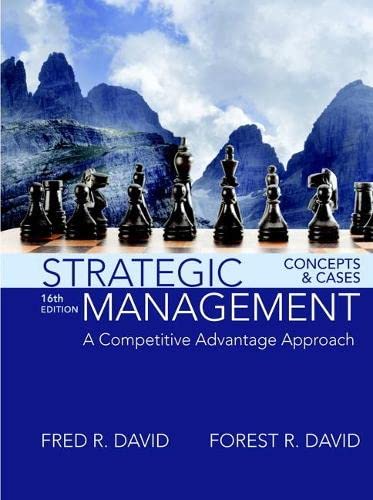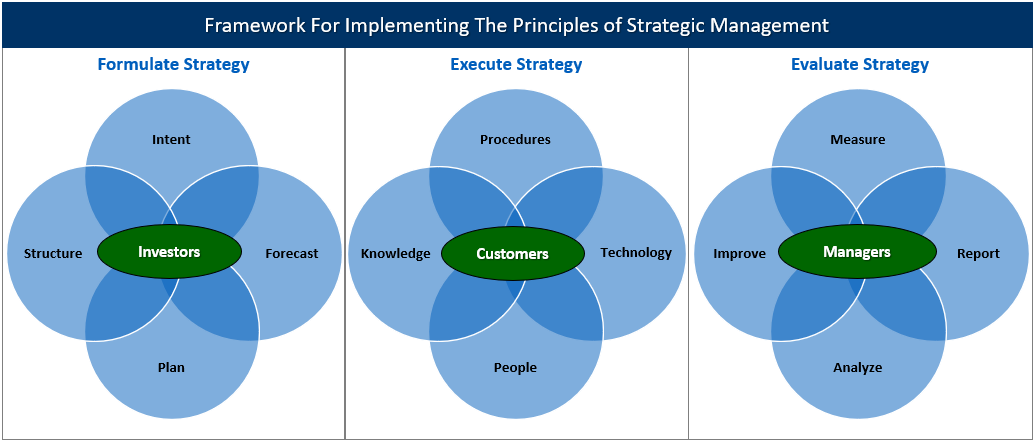Strategic Management Framework
A process hierarchy for formulating, executing and evaluating strategy.

We translate the time-tested Principles of Strategic Management into a practical guide for seizing control of Uncomfortable Leadership Moments. This enables entrepreneurs, executives, managers and board members to:
- Innovate new products, services and pricing models.
- Start-up new companies, divisions, and regions.
- Unblock stalled customer acquisition, retention, up-selling, cross-selling, and referral partners.
- Expand into new industries and geographic markets.
- Restructure companies, divisions, departments, teams.
- Merge and Acquire new companies and product lines.
Strategy Formulation Requirements
Translate Mission, Vision, Values and Behaviors

Clarify your strategic intent including your purpose (mission), core values and behaviors, goals (vision) and strategic initiatives.
Forecast Accurately and Timely

Align your forecasts for revenue, work activities, productivity, staffing levels, and expense requirements.
Plan Products, Services, Markets and Execution

Validate that your product, service, industry, geographic, and customer plans are viable in the external marketplace.
Structure Businesses, Departments and Jobs

Organize your business units, processes, departments, and jobs to clarify responsibilities, drive accountability and achieve results.
Strategy Execution Requirements
Map and Document Procedures

Transparently identify work activities for serving each customer use case, across every stage of the customer life cycle.
Deploy Technology Enablers

Ensure that technology is enabling your employees and managers – – rather than disenabling them!
Integrate Management Practices

Integrate your human resource practices to your mission, vision and goals at every stage of the employee life cycle.
Transfer Technical Knowledge

Provide instant access to instructions and policies so employees and managers can execute with precision!
Strategy Evaluation Requirements
Accurate and Complete Data Tracking
Ensure that data fields are hierarchical, have consistent naming conventions, are collected as work is completed, are fully populated, and stored together.
Trusted and Timely Analytics

Integrate data tables so consistent analysis, interpretation, gap identification and process improvements can be instantly prioritized.
Cascaded Reporting For Managers & Employees

Organize and Display data hierarchies uniformly so executives, managers and employees have a consistent view of data and analysis.
Actionable Process Improvements

Clarify action plans with specific accountability, actions, deadlines, expected outcomes, expenses, ROI; frequent progress reviews.

